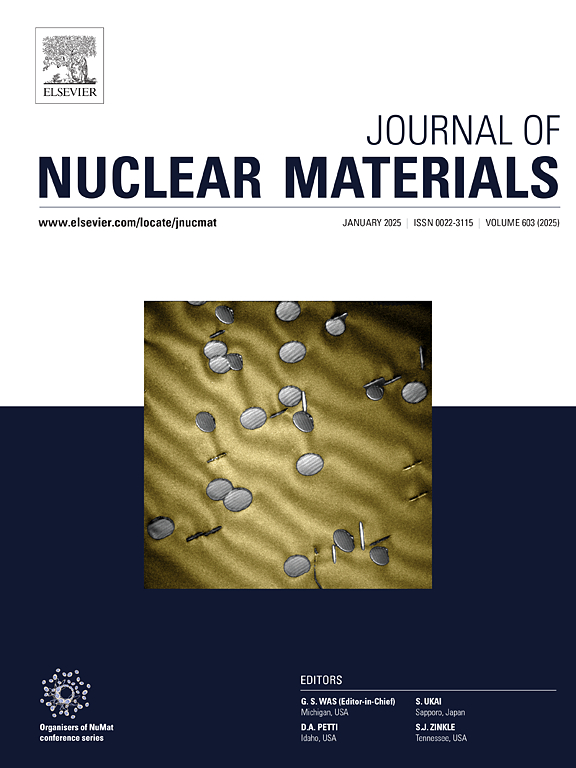Elevated tritium diffusion barrier from varied segregation strengths in Li4TiO4 (1–10) grain boundary
IF 2.8
2区 工程技术
Q3 MATERIALS SCIENCE, MULTIDISCIPLINARY
引用次数: 0
Abstract
Whether the grain boundary (GB) accelerates or impedes the diffusion of hydrogen isotopes is reported with considerable inconsistency. Here the migration of tritium in (1–10) twin GB of Li4TiO4 breeder ceramic is investigated with density functional theory and kinetic Monte Carlo. The identified tritium sites along GB exhibit significantly varied segregation energies in the range of −1.57 ∼ −0.45 eV, which is attributed to the difference in the space volume around the site and the hydrogen bond. The minimum energy paths for tritium migration are obtained and the global barriers (1.12 eV and 0.88 eV along a and b, respectively) indicate a slower-than-bulk diffusion along GB. The rugged energy landscape along GB is analyzed by the kinetic and configurational components of local barriers. It's observed that the induced difference in configurational energies (i.e. the varied segregation strengths) by GB structure makes the major contribution to the raised global barrier. Diffusion coefficient for tritium migration along GB is estimated as , which is comparable to experimental data. The presented case offers insights for understanding the modified diffusion rates of segregated species by GB.
求助全文
约1分钟内获得全文
求助全文
来源期刊

Journal of Nuclear Materials
工程技术-材料科学:综合
CiteScore
5.70
自引率
25.80%
发文量
601
审稿时长
63 days
期刊介绍:
The Journal of Nuclear Materials publishes high quality papers in materials research for nuclear applications, primarily fission reactors, fusion reactors, and similar environments including radiation areas of charged particle accelerators. Both original research and critical review papers covering experimental, theoretical, and computational aspects of either fundamental or applied nature are welcome.
The breadth of the field is such that a wide range of processes and properties in the field of materials science and engineering is of interest to the readership, spanning atom-scale processes, microstructures, thermodynamics, mechanical properties, physical properties, and corrosion, for example.
Topics covered by JNM
Fission reactor materials, including fuels, cladding, core structures, pressure vessels, coolant interactions with materials, moderator and control components, fission product behavior.
Materials aspects of the entire fuel cycle.
Materials aspects of the actinides and their compounds.
Performance of nuclear waste materials; materials aspects of the immobilization of wastes.
Fusion reactor materials, including first walls, blankets, insulators and magnets.
Neutron and charged particle radiation effects in materials, including defects, transmutations, microstructures, phase changes and macroscopic properties.
Interaction of plasmas, ion beams, electron beams and electromagnetic radiation with materials relevant to nuclear systems.
 求助内容:
求助内容: 应助结果提醒方式:
应助结果提醒方式:


